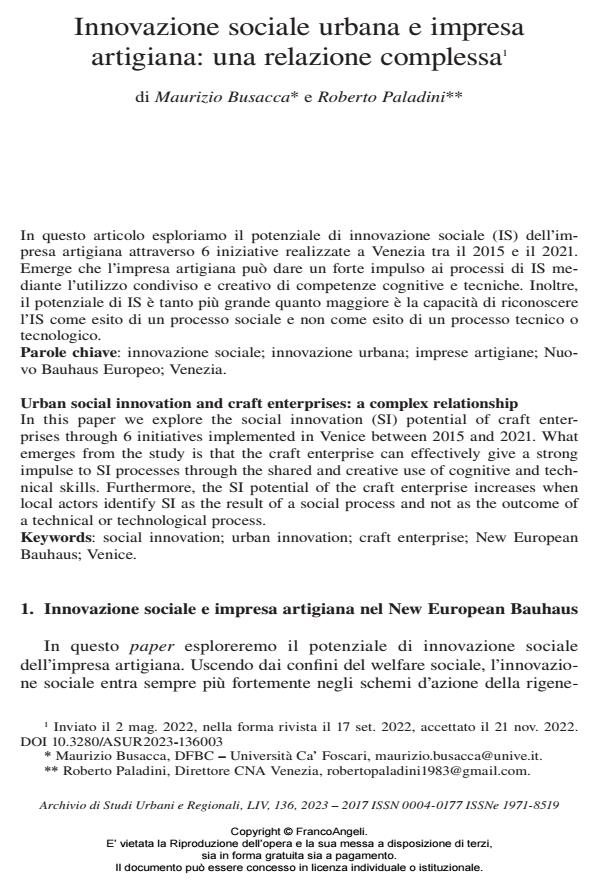Urban social innovation and craft enterprises: a complex relationship
Journal title ARCHIVIO DI STUDI URBANI E REGIONALI
Author/s Maurizio Busacca, Roberto Paladini
Publishing Year 2023 Issue 2023/136
Language Italian Pages 22 P. 52-73 File size 144 KB
DOI 10.3280/ASUR2023-136003
DOI is like a bar code for intellectual property: to have more infomation
click here
Below, you can see the article first page
If you want to buy this article in PDF format, you can do it, following the instructions to buy download credits

FrancoAngeli is member of Publishers International Linking Association, Inc (PILA), a not-for-profit association which run the CrossRef service enabling links to and from online scholarly content.
In this paper we explore the social innovation (SI) potential of craft enter- prises through 6 initiatives implemented in Venice between 2015 and 2021. What emerges from the study is that the craft enterprise can effectively give a strong impulse to SI processes through the shared and creative use of cognitive and tech- nical skills. Furthermore, the SI potential of the craft enterprise increases when local actors identify SI as the result of a social process and not as the outcome of a technical or technological process.
Keywords: social innovation; urban innovation; craft enterprise; New European Bauhaus; Venice.
- Crafting proximity: The case of brick-and-mortar artisanal ateliers in Turin, Italy Emanuela Naclerio, Amanda Brandellero, in Cities 105983/2025 pp.105983
DOI: 10.1016/j.cities.2025.105983
Maurizio Busacca, Roberto Paladini, Innovazione sociale urbana e impresa artigiana: una relazione complessa in "ARCHIVIO DI STUDI URBANI E REGIONALI" 136/2023, pp 52-73, DOI: 10.3280/ASUR2023-136003